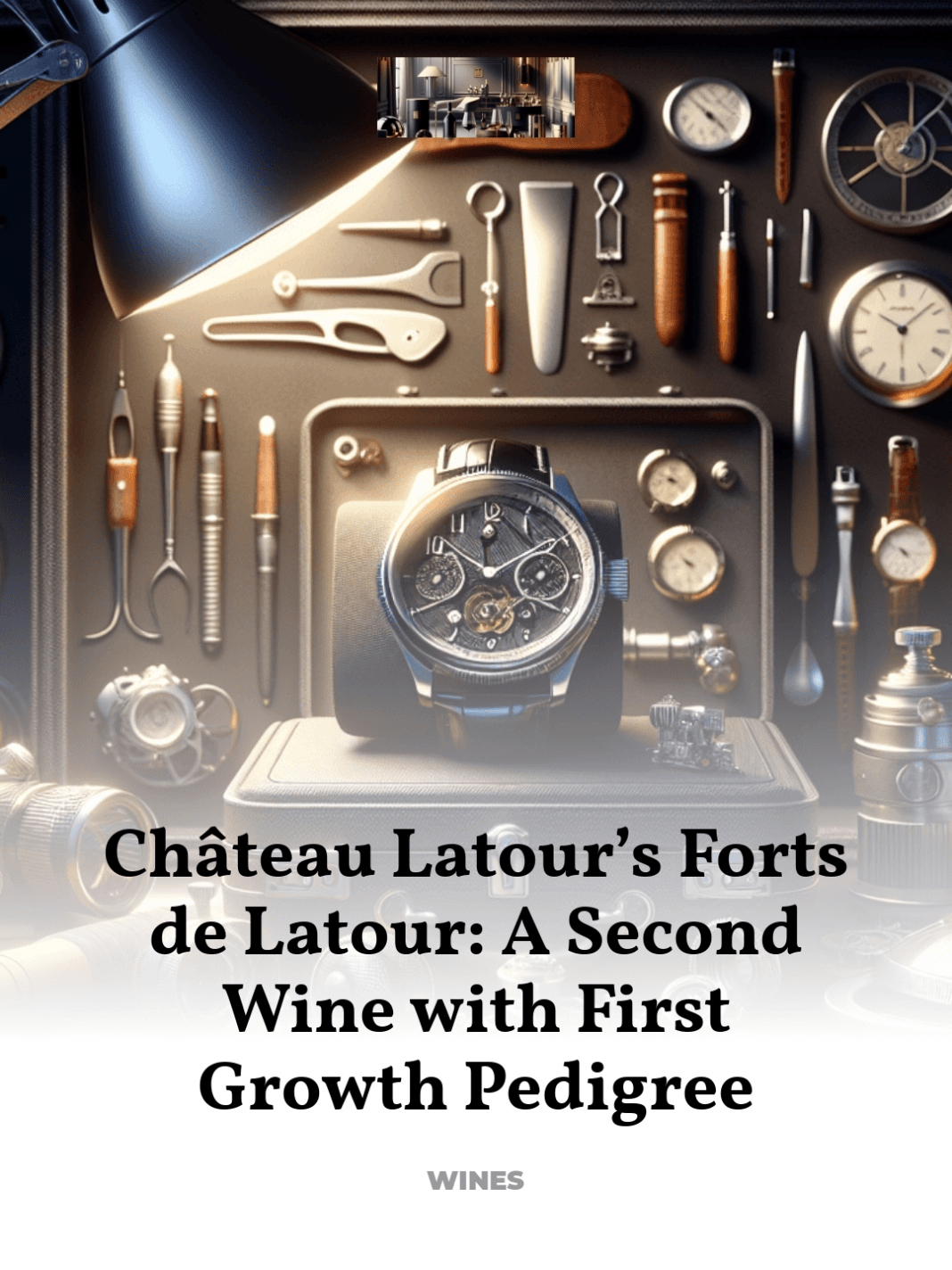Why this label is far more than a second-tier offering
Château Latour, a beacon of viticultural excellence, crafts Forts de Latour, a second wine that rivals the complexity and prestige of many first growths.
- The Rich Heritage of Château Latour
- Understanding Forts de Latour
- The Vinification Process
- Tasting Notes and Vintages
- Cultural Significance in the World of Wine
- Collecting Forts de Latour
- Beyond Second Label: A Legacy of Its Own
The Rich Heritage of Château Latour
Established in the 14th century, Château Latour has been an emblem of winemaking prowess in Bordeaux’s Pauillac region. With a history steeped in centuries of land battles and ownership transitions, it stands today not only as a winery but as a symbol of resilience and enduring quality. The estate’s philosophy of blending tradition with innovation ensures that each bottle of Château Latour and its second wine, Forts de Latour, is a testament to its rich legacy.
Understanding Forts de Latour
Introduced in 1966, Forts de Latour serves as the second wine of the esteemed Château Latour. Crafted from younger vines of the Enclos, the most prestigious vineyard parcel of the estate, this wine is designed to be accessible earlier than its grand vin yet still possesses the capability for aging gracefully. Forts de Latour encapsulates a real sense of place, embodying the terroir and the meticulous attention to detail practiced at Château Latour.
The Vinification Process
The creation of Forts de Latour is a mirror of passion and precision. Grapes are meticulously selected and harvested, with only the best fruit making it to the fermentation tanks. The wine undergoes a carefully monitored fermentation process to preserve its unique character and potential for complexity. Aging in French oak barrels, partially new, imbues Forts de Latour with subtle tannins and a balanced structure, making it a standout second wine that hints at the grandeur of its primary label.
Tasting Notes and Vintages
Forts de Latour is celebrated for its vibrant bouquet and robust structure. Typical notes include ripe blackcurrant, cedar, and hints of spice, underpinned by an elegant minerality. Noteworthy vintages, such as the acclaimed 2010, exhibit depth and the potential to evolve beautifully over decades, much like the grand vin from Château Latour. Each vintage of Forts de Latour offers a unique snapshot of the year’s climatic conditions, translated through the skilled hands of its winemakers into a bottle that delights connoisseurs and collectors alike.
Cultural Significance in the World of Wine
Forts de Latour is not merely a second wine; it is a cultural icon that represents the democratization of luxury. It allows wider access to the prestigious craftsmanship of Château Latour at a more approachable price point, without compromising on quality. This approachability has not only expanded the reach of the Château but has also elevated the standard of what second wines can aspire to be, influencing other estates to follow suit.
Collecting Forts de Latour
Collectors prize Forts de Latour for its heritage, craftsmanship, and the prestige of its primary estate. While accessible younger than Château Latour’s grand vin, it also holds potential for long-term aging, making it a versatile addition to any collection. The wine’s ability to evolve and gain complexity over time appeals to those who appreciate the nuances of maturation, offering a journey through the evolution of flavor and character.
Beyond Second Label: A Legacy of Its Own
Forts de Latour transcends its status as a second wine, embodying the heritage and artisanal excellence of Château Latour while carving out its distinct legacy. It stands as a testament to the notion that second wines can rival their primary labels in complexity and enjoyment. For enthusiasts and collectors, Forts de Latour offers not just a taste but an experience—a glimpse into the storied halls of Château Latour and the rich tapestry of Bordeaux winemaking.
For further exploration into the world of Château Latour and its wines, consider visiting authoritative sources such as Château Latour’s Official Website.



